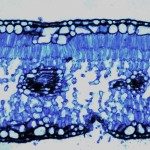Lien vers Pubmed [PMID] – 22221369
J. Food Prot. 2012 Jan;75(1):150-3
The most-probable-number (MPN) method is often time-consuming for the isolation, detection, and quantification of Vibrio parahaemolyticus from natural sources. MPN counting of V. parahaemolyticus bacteria usually involves the isolation of typical V. parahaemolyticus colonies on selective medium, with subsequent confirmation by biochemical identification. In this study, we evaluated the use of a PCR on MPN enrichment cultures (MPN-PCR) for the direct detection of total and pathogenic V. parahaemolyticus cells in frozen shrimp. This reaction targeted the R72H, tdh, and trh sequences. An internal amplification control was added to the samples before R72H amplification. There was an excellent correlation between the results of the two methods for artificially inoculated and natural shrimp samples. Of 36 natural samples, 28 tested positive for the presence of V. parahaemolyticus, with an MPN value of 2 × 10(-1) to 9.2 × 10(1) per g. No pathogenic V. parahaemolyticus cells were detected. The test had a detection limit of one V. parahaemolyticus organism per g and was completed within two working days. These results support the use of the combination of PCR with MPN for the detection of total or potentially pathogenic V. parahaemolyticus cells in frozen shrimp.



